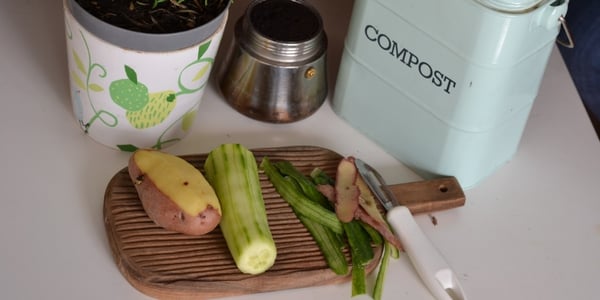Eating out is commonly one of the most enjoyable parts of our day. It can be a nice break from our...


Eating out is commonly one of the most enjoyable parts of our day. It can be a nice break from our...

Whether to help save the earth or to help save your wallet, there are many reasons to make efforts...
As we journey through life, the importance of nurturing relationships with family and friends...

Thanksgiving is a cherished holiday in many households–a time for gathering with family and friends...
How to Improve Your Coordination and Reflexes
Being steady on your feet and reacting quickly to what’s around you can make a big difference in everyday life—whether you’re playing sports, chasing after grandkids, or just trying to avoid tripping over the dog. Good coordination and quick reflexes help you stay active, independent, and less prone to injuries. In this post, we’ll walk through easy-to-implement tips that can help you stay sharp and move with confidence, no matter your age or activity level.
Understanding Coordination and Reflexes
Before getting into improvement techniques, it's essential to understand what coordination and reflexes are and why they matter.
Coordination
Coordination is the ability to use different parts of the body together smoothly and efficiently. It involves integrating our sensory systems, including vision, proprioception (body awareness), and balance, with our motor skills.
Reflexes
Reflexes are automatic, involuntary responses to stimuli. They play a crucial role in protecting us from harm and helping us react quickly to our environment.
With practice and targeted exercises, it is possible to improve these vital skills.
The Importance of Staying Active
Regular physical activity is one of the most effective ways to maintain and improve coordination and reflexes. Staying active keeps your body fit and helps strengthen neural connections that are essential for quick reactions and smooth movements.
Benefits of Regular Physical Activity
Aim for at least 150 minutes of moderate-intensity aerobic activity or 75 minutes of vigorous-intensity aerobic activity per week, along with muscle-strengthening activities at least twice a week.
Specific Exercises to Boost Coordination and Reflexes
Ball Drills
Ball exercises are excellent for improving hand-eye coordination and reflexes. Try these simple drills:
Balance Exercises
Good balance is crucial for coordination. Incorporate these exercises into your routine:
Agility Ladder Drills
An agility ladder is a versatile tool for improving footwork, coordination, and reflexes. Try these exercises:
Reaction Time Games
Engage in activities that challenge your reaction time:
Dance
Dancing is an enjoyable and fantastic way to improve coordination, balance, and reflexes. Consider taking dance classes or following online tutorials for styles that offer specific benefits:
If you're building habits to stay active and sharp, it helps to keep your day-to-day finances simple and reliable. Click here or the button below to open a Boost Checking Account with Dort Financial Credit Union!
Incorporating Mindfulness and Brain Training
Improving coordination and reflexes isn't just about physical exercise. Mental practices can also play a significant role.
Meditation and Mindfulness
Regular meditation and mindfulness can enhance your ability to focus and react quickly to stimuli. Try incorporating a 10-15 minute meditation session into your daily routine.
Brain Training Games
Puzzles, memory games, and brain-training apps can help improve cognitive function, enhancing coordination and reflexes.
Nutrition for Better Coordination and Reflexes
A healthy diet can support your efforts to improve coordination and reflexes. Focus on:
The Role of Sleep in Coordination and Reflexes
Never underestimate the power of a good night's sleep. Adequate sleep is essential for:
Aim for 7-9 hours of quality sleep each night. Establish a consistent sleep schedule and create a relaxing bedtime routine to improve sleep quality.
Safety Considerations
While working on improving your coordination and reflexes, it's necessary to prioritize safety:
Tracking Your Progress
To stay motivated and see how far you've come, consider tracking your progress:
Social Aspects of Improving Coordination and Reflexes
Engaging in group activities can make the process of improving coordination and reflexes more enjoyable and sustainable:
Adapting Your Environment
Making small changes to your living space can provide ongoing opportunities to challenge your coordination and reflexes:
The Importance of Consistency
Improving coordination and reflexes is not a one-time effort but an ongoing process. Consistency is key to seeing real, lasting improvements. Try to incorporate some form of coordination and reflex training into your daily routine, even if it's just for a few minutes each day.
Embracing Technology
While we've discussed traditional methods, don't overlook the potential of modern technology in improving coordination and reflexes:
You don’t need a strict routine or fancy equipment—just keep moving and stay curious. Try new things, play a little, challenge yourself now and then. The more you mix it up, the more your body and brain stay in sync. It’s not about being perfect, just about staying sharp in your own way.
Whether you're saving for gear, classes, or future plans, having a dedicated place to set money aside makes it easier to stay on track. Click here or the button below to open a Boost Savings Account with Dort Financial Credit Union!
Living50+